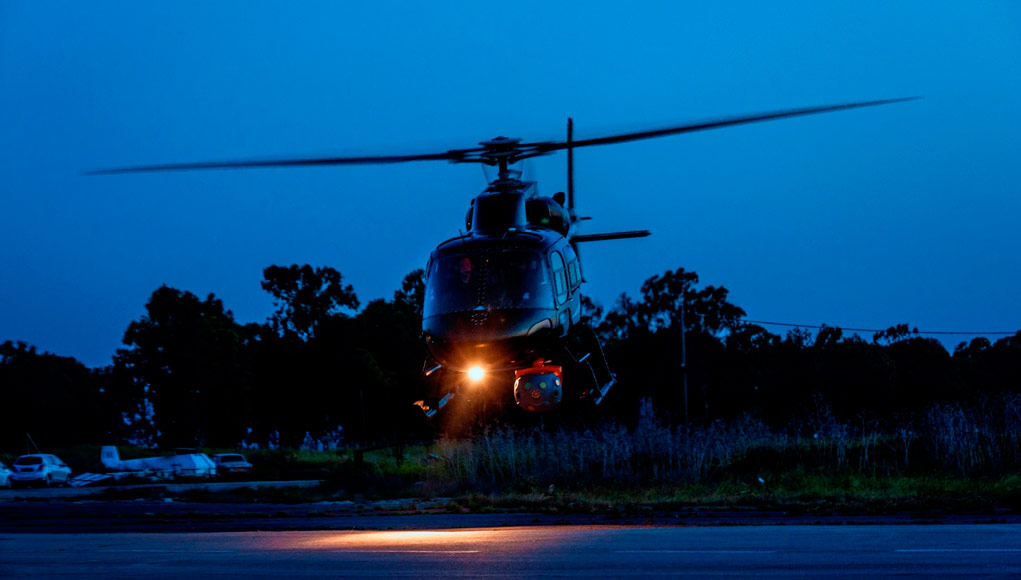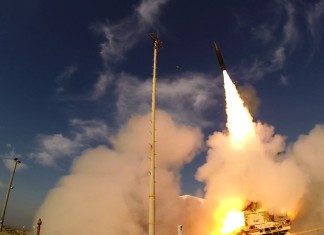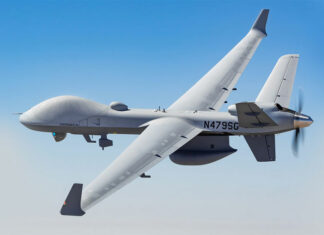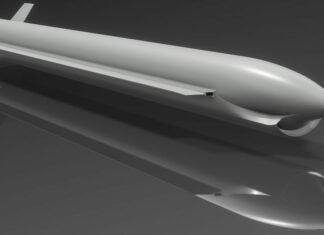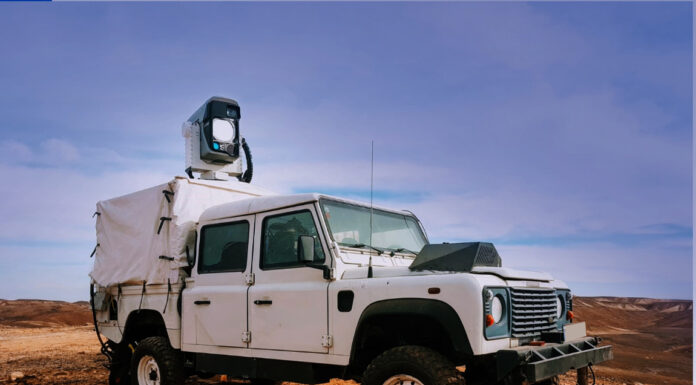
Elbit Systems successfully demonstrated the BrightNite system in a series of night flights. Britenite is a solution that enables utility helicopters to perform Degraded Visual Environment (DVE) missions successfully in more than 90% of the nights. The demonstration flights carried out in Israel and involved dozens of pilots from different nationalities and services.
[nonmember]Subscribe to see Brightnite in action and more[/nonmember]
The goal of this evaluation was to demonstrate the systems’ performance in DVE conditions, in moonless, pitch dark nights, in which flights are rarely executed. Installed onboard an Airbus Twin-Star helicopter for the demo, the BrightNite system provided the pilots with night-piloting capabilities similar and even exceeding to those of attack helicopters.
Comprised of non-gimbaled uncooled FLIR and highly sensitive Complementary Metal-Oxide Semiconductor (CMOS) sensors the BrightNite DVE solution provides the pilot an intuitive image with the ultra-wide field of regard, projected through the pilot’s Helmet Mounted Display through the ANVIS/HUD.

Overlaid by a synthetic layer that follows the contours of the landscape, the display is combined with a third layer of mission conformal 3D symbology indicating various hazards, mission conformal symbology and tactical data.
Using a single Britenite sensor and the ‘synthetic world’, multiple crew members can simultaneously scan different areas through the entire field of regard, safely sharing the mission workload and responsibilities, regardless of the night visibility conditions.
[ismember]
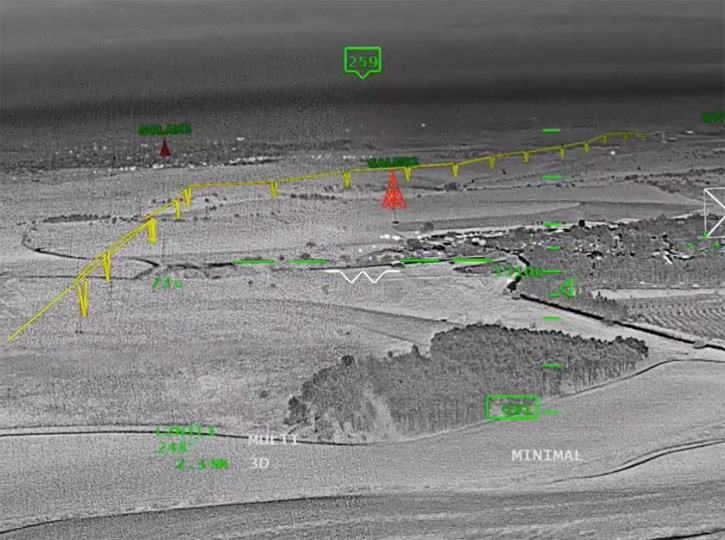
Low-flying aircraft are vulnerable to threats such as steep terrain, enemy fire and the intersection of utility wires in the flight path. Sorties must often be carried out in a DVE, adding to the already heavy workload and leaving flight crews to rely on Night Vision Goggles (NVG) to accomplish their mission.
Factors limiting the pilots’ FOV include complete darkness, poor weather conditions such as Brownout, Whiteout and sandstorms.
According to the U.S. Army Aviation, there is a problem with spatial disorientation while operating in degraded visual environments. Historically, approximately 20 percent of all Class A and B mishaps have been attributed directly to spatial disorientation or loss of situational awareness in DVE, but the issue remains far from a solution.
Elbit Systems’ BrightNite overcomes these visibility limitations and greatly improves situational awareness, mission effectiveness and above all – flight safety in DVE. The system processes real-time panorama video, enhanced by a 3D conformal mission symbology concept and transmits high-resolution video to the Helmet-Mounted Display (HMD). BrightNite utilizes unified location-based information culled from a wide FOV to display crystal clear images, in zero visibility and zero latency, enabling helicopters to successfully execute missions in more than 90% of the nights.[/ismember]
In the sorties that took place during the demonstration flights, the feedback was extremely positive and the pilots emphasized the contribution of the system to flight. “The system is like magic, [it] literally opens any night to flight” one of the pilots commented.
